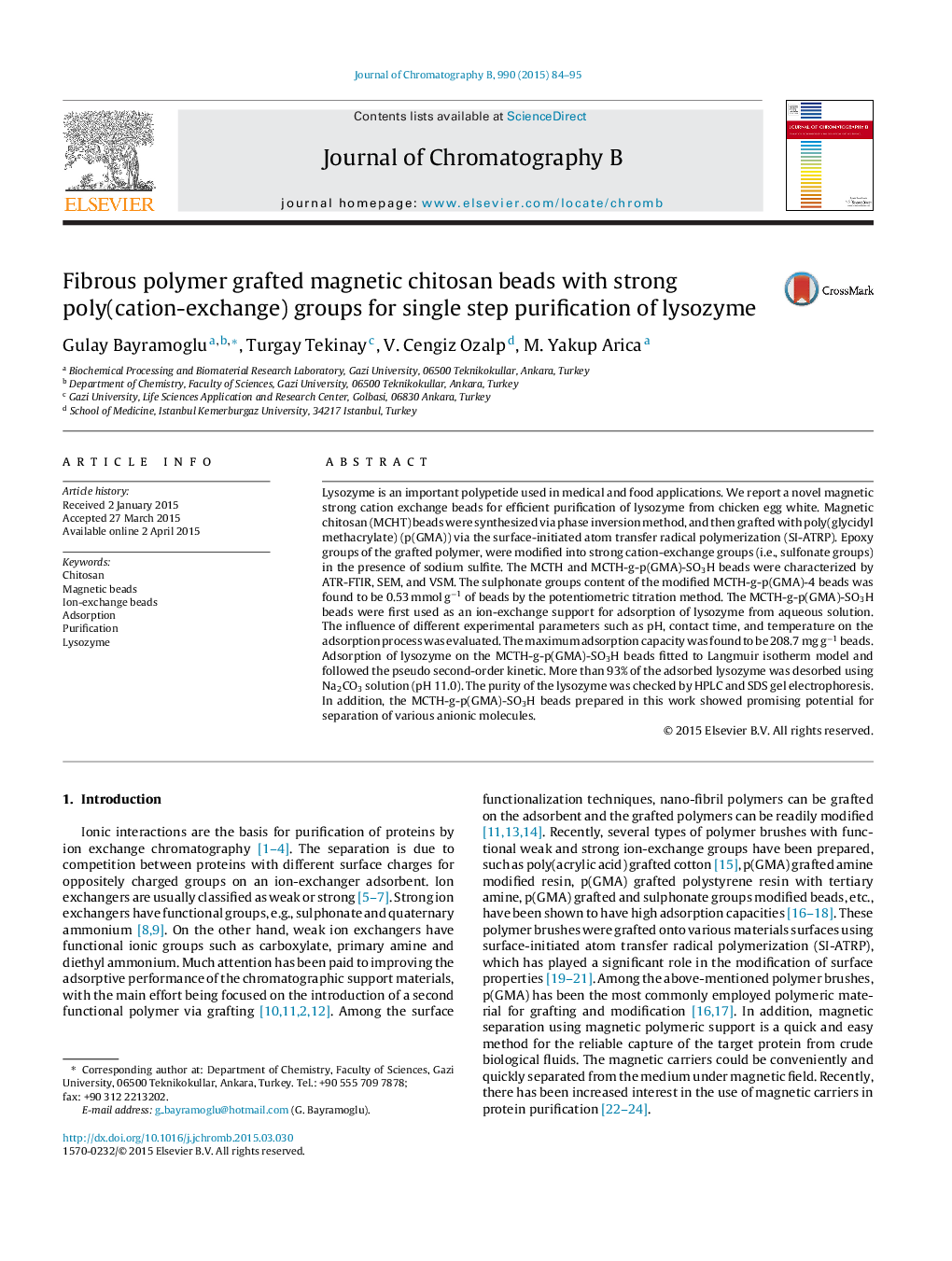| Article ID | Journal | Published Year | Pages | File Type |
|---|---|---|---|---|
| 1212222 | Journal of Chromatography B | 2015 | 12 Pages |
•A novel magnetic cation-exchange support was prepared from grafted fibrous polymer.•Lysozyme was separated from aqueous medium and purified from chicken egg white.•Adsorption process is well described by the Langmuir and second-order kinetics models.
Lysozyme is an important polypetide used in medical and food applications. We report a novel magnetic strong cation exchange beads for efficient purification of lysozyme from chicken egg white. Magnetic chitosan (MCHT) beads were synthesized via phase inversion method, and then grafted with poly(glycidyl methacrylate) (p(GMA)) via the surface-initiated atom transfer radical polymerization (SI-ATRP). Epoxy groups of the grafted polymer, were modified into strong cation-exchange groups (i.e., sulfonate groups) in the presence of sodium sulfite. The MCTH and MCTH-g-p(GMA)-SO3H beads were characterized by ATR-FTIR, SEM, and VSM. The sulphonate groups content of the modified MCTH-g-p(GMA)-4 beads was found to be 0.53 mmol g−1 of beads by the potentiometric titration method. The MCTH-g-p(GMA)-SO3H beads were first used as an ion-exchange support for adsorption of lysozyme from aqueous solution. The influence of different experimental parameters such as pH, contact time, and temperature on the adsorption process was evaluated. The maximum adsorption capacity was found to be 208.7 mg g−1 beads. Adsorption of lysozyme on the MCTH-g-p(GMA)-SO3H beads fitted to Langmuir isotherm model and followed the pseudo second-order kinetic. More than 93% of the adsorbed lysozyme was desorbed using Na2CO3 solution (pH 11.0). The purity of the lysozyme was checked by HPLC and SDS gel electrophoresis. In addition, the MCTH-g-p(GMA)-SO3H beads prepared in this work showed promising potential for separation of various anionic molecules.
